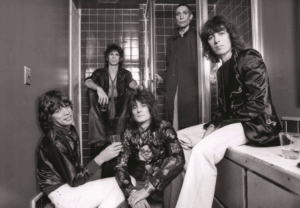The Best And Worst Album From Rush’s Career

via Rush / YouTube
Rush, the legendary Canadian rock trio—Geddy Lee, Alex Lifeson, and Neil Peart—have left an undeniable mark on the music world. Over their 45-plus years together, the band explored various genres, from hard rock to progressive, even dipping into pop-rock and new wave. With such a long and evolving career, they’ve released both undeniable masterpieces and some albums that divided their fanbase. Let’s take a look at two key albums in their journey: one hailed as their best, and another that left fans split.
Snakes & Arrows Deemed the Worst
After the mixed reception of Vapor Trails, Rush returned in 2007 with Snakes & Arrows. While the album reflects the band’s love for their craft and showcases their seasoned musicianship, it doesn’t immediately grab fans’ attention. Instead, it offers a mature, polished sound that remains steady throughout but doesn’t push many boundaries. The band kept their sound modern, with biting guitars and their signature complex rhythms, but it didn’t hit the high notes that fans had come to expect.
For some die-hard Rush fans, Snakes & Arrows was a solid addition to the band’s extensive catalog. Others, however, found it underwhelming, especially when compared to the band’s earlier, more experimental work. The album polarized listeners, with some praising its tight execution, while others criticized it for lacking the adventurous spirit that they showed in their earlier albums. Despite the split opinions, the album still earned a gold record in Canada, proving that even a “misstep” from Rush still resonates with many.
Moving Pictures as Rush’s Best Album
On the flip side, Moving Pictures is often considered Rush’s magnum opus. Released in 1981, this album perfectly balances the intricate, progressive elements that made Rush famous with a more streamlined, accessible approach. Gone were the lengthy epics of their past, replaced by shorter, punchier tracks that still packed all the technical brilliance Rush was known for.
The album includes some of the band’s most iconic songs: “Tom Sawyer,” “Red Barchetta,” the instrumental “YYZ,” and “Limelight.” These tracks became instant classics, earning Moving Pictures four platinum records in both Canada and the U.S. It’s no wonder the album remains their best-selling, with only seven tracks yet an impactful runtime just over 40 minutes. Each song showcases the trio’s musical prowess, blending Geddy Lee’s intricate basslines, Alex Lifeson’s soaring guitar work, and Neil Peart’s masterful drumming.
What makes Moving Pictures so remarkable is how it captures Rush at their creative peak. The band managed to stay true to their progressive roots while appealing to a wider audience. It’s the perfect example of their ability to evolve, innovate, and produce timeless music that still resonates decades later. The album’s massive success cemented their status as one of the most influential rock bands of all time.



















